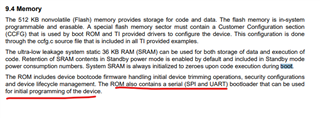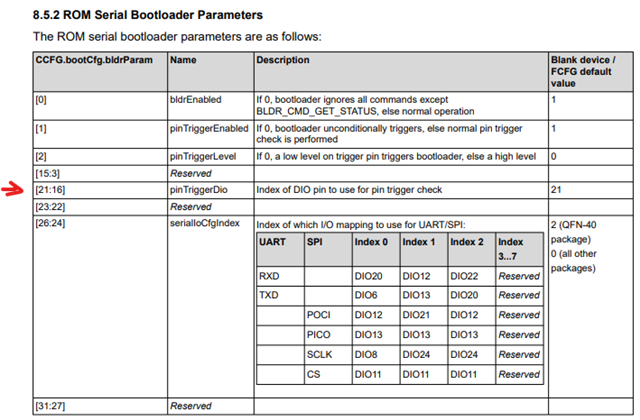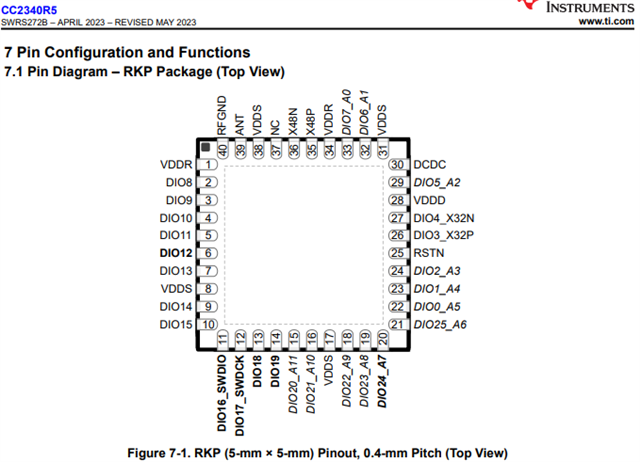Hello Team,
We are working on hardware design using CC2340R5 for our BLE module & want to have minimum components and exposed pin count.
My main concern is regarding the production programming of the module, as per my understanding we will need the following pins
- SWDIO
- SWCLK
- nRST
- GND
- VCC
- Serial Tx/Rx

But according to datasheet the CC2340R5 have internal bootloader, which enables the user to program through serial UART interface only (*Tx/Rx pins), just want to know the following things:
1. How to enable internal bootloader, Is there any GPIO which we will need to control at boot up to enter into bootloader mode?
2. which TI tools will be required to program the binary files if we connect serial UART pins through FTDI serial USB converter.
Please let me know if you need more information.
Regards,
Harinder Singh





